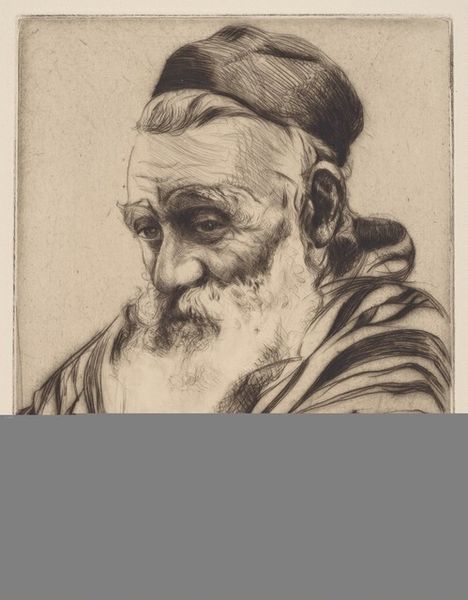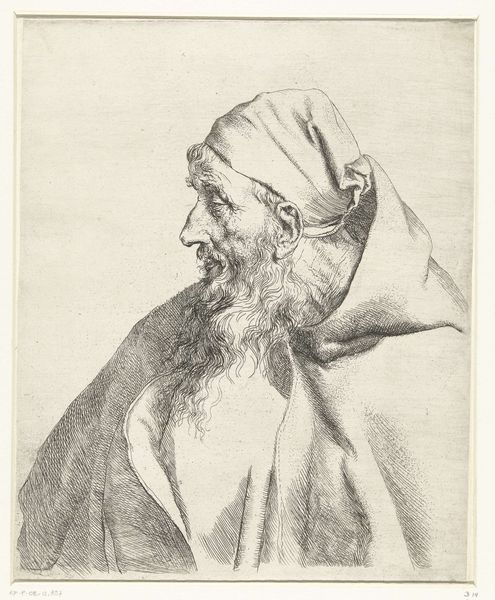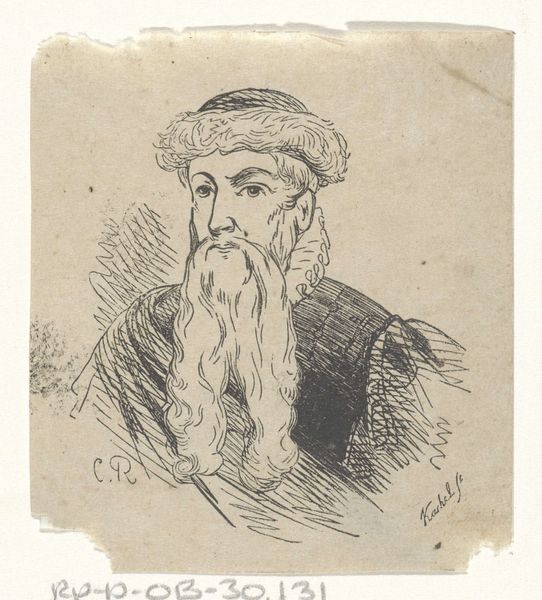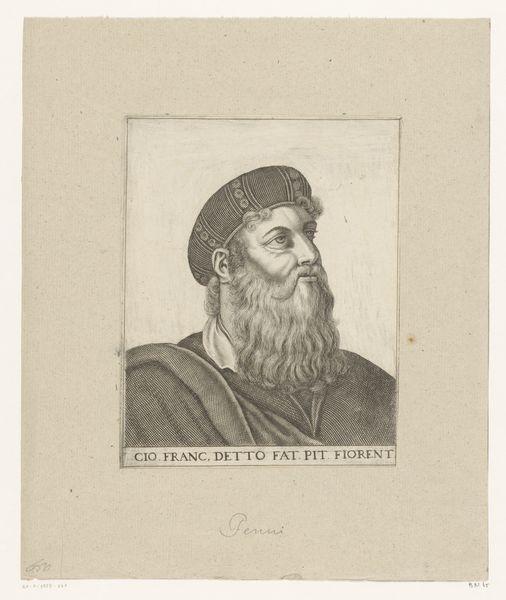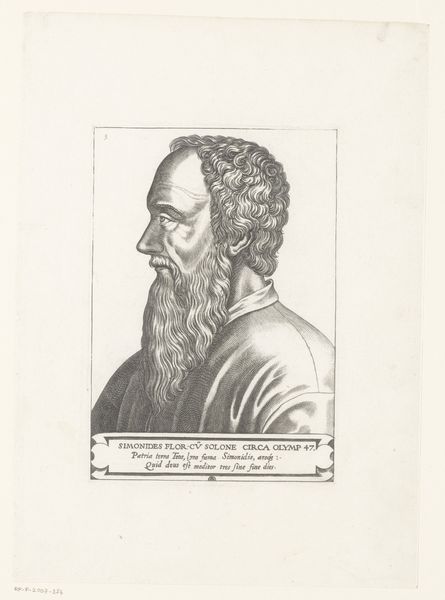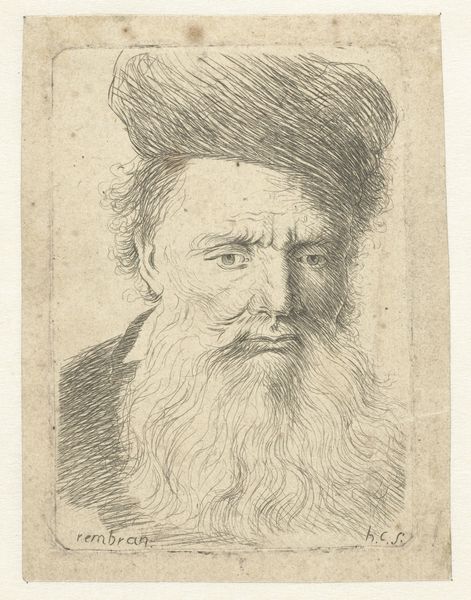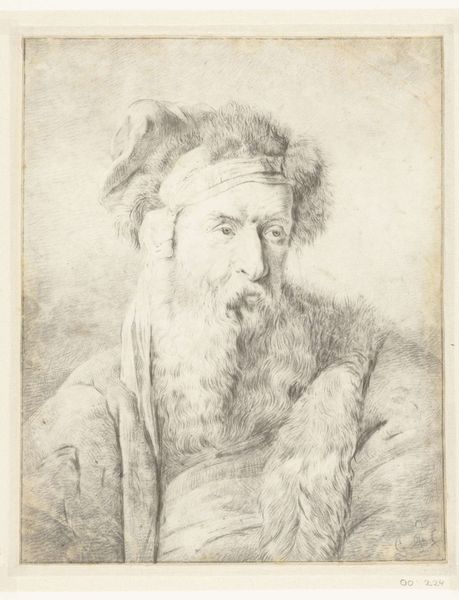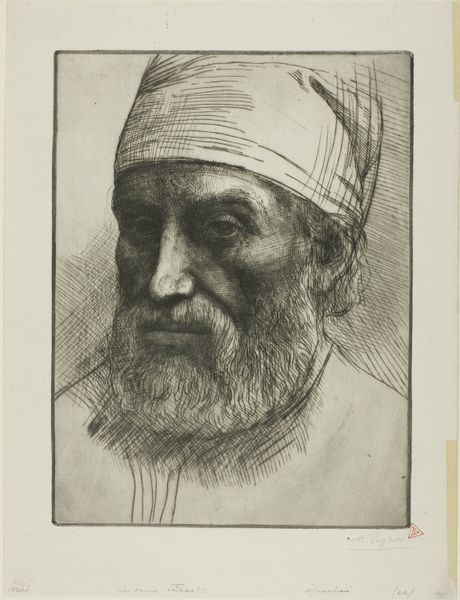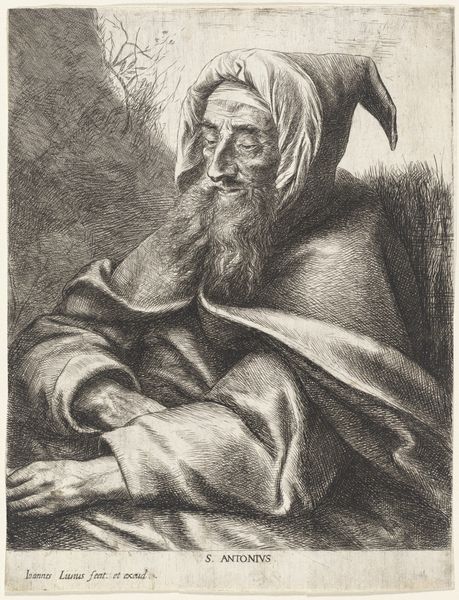
drawing, pencil, graphite
#
portrait
#
pencil drawn
#
drawing
#
caricature
#
pencil drawing
#
romanticism
#
pencil
#
graphite
#
portrait drawing
#
history-painting
Dimensions: height 255 mm, width 197 mm
Copyright: Rijks Museum: Open Domain
Pieter Bartholomeusz Barbiers made this drawing of an unknown man in the Netherlands, sometime in the late 18th or early 19th century. It's rendered in graphite and is a head-and-shoulders view of a bearded man in what appears to be antique costume. The sitter's exotic, vaguely middle-eastern headdress and beard would have signified a biblical or otherwise historical figure, drawn from an imagined past. This aesthetic was very much in vogue during the artist's time. It was a moment when artists and their patrons were deeply interested in a romanticized vision of bygone eras. These images often served to reinforce contemporary social hierarchies by creating parallels between the present and a carefully constructed version of the past. To fully understand this drawing, we would need to delve into Dutch history, art academies, and the social function of portraiture at the time. That kind of research allows us to understand what this image meant when it was made.
Comments
No comments
Be the first to comment and join the conversation on the ultimate creative platform.

